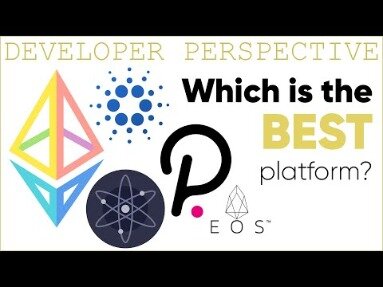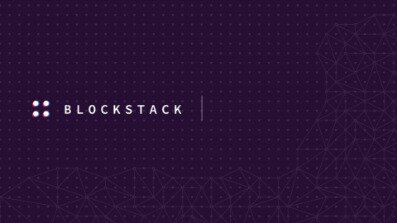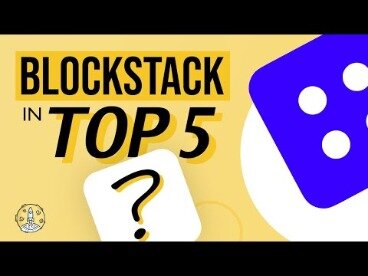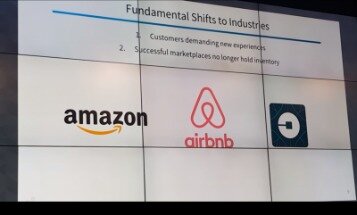Dapps Platforms & Private Blockchain Frameworks
Content
Customizable infrastructures allow building individual solutions on top of existing blockchains to prevent the effort and costs to develop a custom blockchain. The last requirement is about using connected systems that are not only beneficial for metrics. They are also useful to ease the exchange of all kind of data like experiment results, study designs, and papers. With particular APIs, it is even possible to automate the file distribution across system boundaries.
One fundamental essence of open science is to share knowledge globally and the science process itself plus the results out of it accessible for a broad audience or even everyone , without differentiation according to characteristics of any kind. A public blockchain is suitable and can meet that purpose while a consortium/private blockchain would restrict the access. The comparison of a permissioned and permissionless blockchain goes far more in-depth and is connected to different factors like governance models and consensus mechanisms, so it is a research review on its own.
It is prohibited to use, store, reproduce, display, modify, transmit or distribute the data contained in this website without the explicit prior written permission of Fusion Media and/or the data provider. All intellectual property rights are reserved by the providers and/or the exchange providing the data contained in this website.
London Joseph Lubin Joseph Lubin is a Canadian American entrepreneurs who is the co-founder of Ethereum and the founder of ConsenSys, a full-stack, global blockchain company and the world’s leading Ethereum accelerator. Lubin has established himself as a guiding force in the fast-growing blockchain industry and a powerful advocate of decentralized technology. As of February 2018, Forbes estimated Lubin’s net worth in cryptocurrency to be between one and five billion dollars.
1 Risks And Validation Of Smart Contracts
Coupling data to ID rather than apps was the starting point for the Blockstack platform, as head of growth Patrick Stanley explained. This white paper details 7 case studies of attacks that were intercepted and neutralised by Darktrace cyber defense AI, including a zero-day trojan in a manufacturing company’s network. Learn how Darktrace Antigena AI Response modules fight back autonomously, no matter where a threat may emerge, extending to the Cloud, Email and SaaS. This webinar, in which we’ll reveal Computing’s latest research in this area, reflects on how prepared our respondents’ data architecture was going into the pandemic and the role databases have to play in the ability to react and pivot in a crisis. Austin, TX Alyse Killeen Alyse Killeen is a Venture Capital Investor and Managing Partner at StillMark Co. with seed stage to pre-IPO investment experience in enterprise and consumer technologies. An international speaker on blockchain, sharing economy, and IoT, Alyse has presented at events including the IMF SKBI Conference 2016 and TechCrunch Disrupt Beijing 2015. She is a Mentor at Plug and Play Tech Center Accelerator as well as at the Alchemist Accelerator.
Then we identified cross-school elements of such an ecosystem by checking if certain schools sharing the same needs. Altogether, in this section, we described on the one side different challenges and problems of science and the other side how open science can mitigate them and what benefits it can deliver if a suitable technical infrastructure is found. For that purpose, we are analyzing in the next section what specific requirements such an open science infrastructure has to fulfill. In this section, we briefly describe the philosophy behind open science and existing problems in science it can mitigate (section 3.1). Furthermore, we did an analysis to point out what requirements have to be met to establish a technical ecosystem that follows and lives the principles of open science (section 3.2). Finally, we created an overview of the requirements we determined in this section.
He has authored many publications on areas of High-tech, such as Cybersecurity, as well as other business related topics. Tokyo, Japan Tiff Hayden Tiff Hayden is a co-founder of Casheer, Inc., a free mobile payment processing platform for merchants and consumers. She is also a member of Bitcoin GNO, an online community for women involved in Bitcoin, and a member of The Michigan Peace and Liberty Coalition. Washington, DC Roger Ver Roger Keith Ver is an early investor in bitcoin, bitcoin-related startups and an early promoter of bitcoin. She holds a Bachelor of Science degree from the University of Florida in business administration and economics.
What Is Blockchain Good For?
Acceptance will have a decisive role in the futures development of the technology for open science and other application areas. Another success factor he brings up is the existence of a common communication interface, so a trustworthy collaborative environment gets created. Bartling manages an open living document about the usage of the BT for open science that contains many promising ideas, projects, and hypothesis . It is special because everyone contributes to the paper by feedback, visions, or suggestions, so a collaborative and constructive discussion can take place about its contents. The statements in the living document are consistent with those by Dhillon suggesting to use the BT for science to enhance reproducibility, collaborations, and trust, but they advance even a step further. Besides many blockchain projects, they also introduce novel ideas for funding research, incentive systems for all kind of scientific activities, and an open repository for data sharing .
Dominik is currently focused on making the nascent Iota technology market-ready — and thus actualizing the full potential of blockchain/cryptocurrencies and the Internet of Things. Blacksburg, Virginia Amber Baldet Amber is co-founder and CEO of Clovyr, a company reshaping how businesses connect to each other and the world’s data. London, United Kingdom Charles Hoskinson Charles Hoskinson is a Colorado-based technology entrepreneur, mathematician, and blockchain enthusiast.
Often, an academic third party like a publisher holds the rights, so the scientific community is not allowed to reuse this data without permission (Murray-Rust, 2008; Molloy, 2011). Considering the philosophy behind open science, research results should be reusable preventing the waste of resources for collecting already existing data again and allowing for synergies between researchers and their works (Murray-Rust, 2008). We want to point out at an early stage of this paper that BT is just a technology and certainly not the silver bullet that will overcome all problems we are facing in science today.
Blockchain Beyond Cryptocurrency?
Non-experts can also participate and provide valuable data in research , especially in larger data collections that are consisting of simple information. In a blockchain-based open science infrastructure, participants can use digital sensors for measuring all kinds of properties and benefit from the unique characteristics of the environment. The measurements are automatically getting stored in a blockchain, so tampering or censoring is not possible (Wortner et al., 2019). Sensors can produce storage-intensive data, in that case, a blockchain allows storing hashed data sets as identifiers that save a lot of space, and the associated measurements can get stored in a traditional database or an IPFS instead.
Whilst it can be argued that running the code “off the chain” makes sense when considering an alternative to Ethereum smart contracts, you have to place the code somewhere in order for it to run. Only define the parties involved in the agreement and allow them to jointly hold assets and authorize transfers based on judgment. The simplest way to follow these principles is to have as little logic in our blockchain contracts as possible and do more complex operations off of the blockchain. This novel approach of providing a traditional written agreement whilst also leveraging the benefits of automatic execution of contractual obligations brings the best of both worlds to smart contracts. The smart contract startup Agrello proposes an interesting solution for ensuring that the coded smart contract meets the terms of any agreement.
In this section, we briefly describe the blockchain technology , its characteristics, and functionalities to provide fundamental knowledge about it (section 4.1). After that, we compare the requirements of an open science infrastructure (section 3.2) with the characteristics of the BT (section 4.2). Finally, we present an overview matrix and several examples showing that the technology as a technical basis fulfills the requirements and hence suits as a solution. Measurement school focuses on standards of measuring metrics of old and new, mainly internet-based publishing formats (Weller and Puschmann, 2011; Priem et al., 2012; Yeong and Abdullah, 2012). So, for an open science infrastructure, the school demands the capability to calculate old and potentially new metrics to create a measurable environment for the participants.
Most Popular Cryptoassets Revealed: Investors Bullish About Ethereum As Defi Booms
Also, as mentioned, specific groups or the whole network can make decisions collaboratively through ordinary votes that can follow, for example, a democratic approach . Subjects of these polls could be topics like the future development of the network, to add/remove specific features, or to accept/rate proposed projects and contributions.
The safeguarding has to start right at the first appearance of an idea (Schönhals et al., 2018) to provide a trustworthy system and to motivate researchers and other individuals for open collaborations. As a simple example, an idea that appears the first time can be timestamped and immutably stored in a blockchain to prove its existence at a certain time point; also, originators can add metadata like their names to these transactions. The category Reproducibility contains projects that aim to improve the replication rate in science and so the quality of research. Resource sharing focuses on functions to share unused resources, for example, storage space and computing power. The category transparent evidence mainly revolves around proof keeping like Proof-of-Existence to prove that information existed at a certain time and was in possession of a specific person or Proof-of-Submission of manuscripts to journals or conferences. Projects with the classification of intellectual property protection focus on the protection of ideas, contributions, data, and everything an individual submits to make sure to give appropriate credit to the originators. Social Research Platforms/Repositories feature a multitude of science-related functions like communication, data storage/processing, reputation, and identity mechanisms; most projects fell into this category.
- If integration takes too much time, or there are no visible incentives or counter-values, information very likely will not be shared (Campbell et al., 2002; Vision, 2010; Boulton et al., 2011).
- He is one of the biggest and first blockchain bitcoin evangelists and investors.
- A blockchain works similar but organizes its data into blocks which are cryptographically and chronologically linked together and also may use other kinds of consensus mechanisms and smart contracts .
On one side, we question if it is a suitable approach to integrate such financial aspects in the research process. Would that shift the intention to create knowledge and progress in science to an economic focus? On the other side, we agree to establish new incentives for the invested time and expertise of scientists who are reproducing and confirming results/studies and peer-reviewing submitted research work for conferences and journals. Further concerns are about how to deal with bugs in already deployed hence immutable SCs, and how different nations are assessing proofs issued from a blockchain in their juristic processes. Besides sharing storage space and data, there are also approaches to share computing power in a blockchain network. We think a method of that kind is promising to enable, for instance, researchers to execute specific demanding computing tasks such as complex simulations.
If you found one and used it, upsetting the other party, would you then have to resort to more traditional mediation or would Ethereum step in again to rule in the spirit of the contract? The “hard fork” was a decision taken – with the support of the majority of the Ethereum community – to return the stolen funds. One of the most popular smart contract implementations is Ethereum which allows contracts to be written in Solidity – a bespoke programming language. In order to produce a smart contract, the terms have to be distilled into an unambiguous rule set so that the obligations, benefits, and penalties will be crystal clear to both parties. Knowing that any contractual breach will be enforced automatically provides greater security for the parties and means they won’t have to resort to spending time and money enforcing a breach through the courts. It is worth pointing out straight away that they are neither smart, nor are they really contracts – but the name has now stuck.
As with Open Data, of course, every participant and group must have the possibility to decide for themselves about the accessibility of their work; hashing can also be used here to create digital footprints. In a permissionless network, everyone is equal in all aspects, but it also opens ways to system abuse.
Expertise in cryptography, computer security, and software development particularly for startups and quickly-growing, small companies. Alex is currently researching on the industrial applications and emerging frontiers of Quantum Computing and exploring the contours of Post Quantum Cryptography. Greater Chicago Area SHARAT CHANDRA Sharat is an author, keynote speaker, blockchain evangelist and educator. He has advised many blockchain startups in Identity Management and Fintech space.













